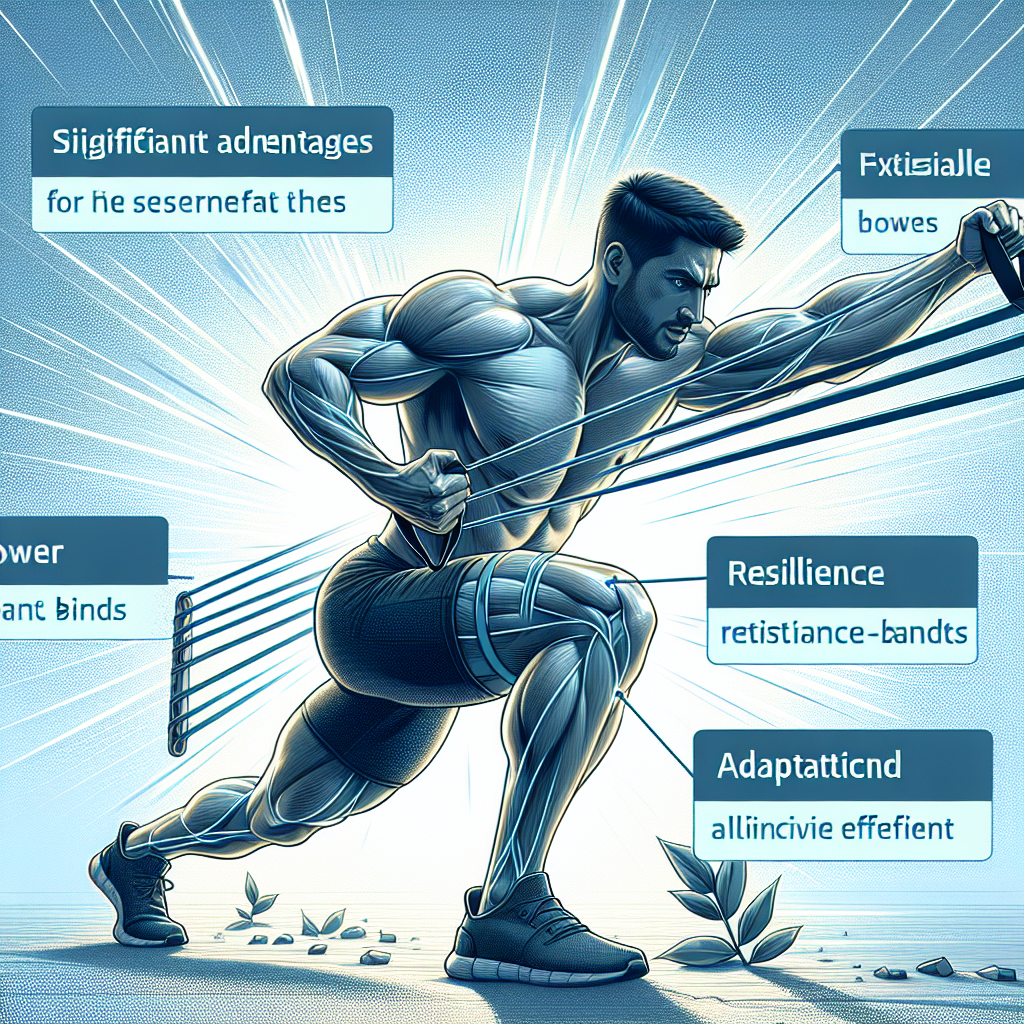Resistance bands workouts
Looking for a versatile and convenient way to amp up your fitness routine? Look no further than resistance bands workouts. Whether you’re a beginner or an experienced fitness enthusiast, these bands offer a challenging and effective workout that can be done anywhere, anytime. From targeting specific muscle groups to improving strength and flexibility, resistance bands provide a wide range of exercises tailored to your fitness goals. Say goodbye to bulky gym equipment and hello to a compact and portable workout solution. So grab your bands and get ready to discover a fun and dynamic way to achieve your fitness goals.
Benefits of Resistance Bands Workouts
Resistance bands workouts have gained immense popularity in recent years due to their effectiveness and versatility. Whether you are a beginner or an experienced fitness enthusiast, incorporating resistance bands into your exercise routine can offer numerous benefits for your strength, flexibility, and overall fitness.
Increased Strength and Muscle Tone
One of the primary benefits of resistance bands workouts is the increased strength and muscle tone that they can provide. Resistance bands create tension throughout the entire range of motion, engaging your muscles in a way that promotes muscle growth and strength development. By consistently challenging your muscles with resistance bands, you can see significant improvements in your overall strength and muscle tone over time.
Improved Flexibility and Mobility
Resistance bands workouts are not only beneficial for building strength but also for improving flexibility and mobility. Unlike traditional weights, resistance bands allow for a full range of motion, which can help to increase your flexibility. Incorporating resistance bands into your stretching routine can help lengthen and elongate your muscles, resulting in improved flexibility and enhanced mobility.
Low Impact on Joints
One of the key advantages of resistance bands workouts is that they are low impact on your joints. Unlike weightlifting or other high-impact exercises, resistance bands provide a gentle yet effective way to strengthen your muscles without putting excessive stress on your joints. This makes resistance bands workouts suitable for individuals with joint issues or those who are recovering from injuries.
Versatility in Exercises
Another major benefit of resistance bands workouts is their versatility. Resistance bands can be used to target various muscle groups and can be incorporated into a wide range of exercises. From upper body exercises like bicep curls and shoulder presses to lower body exercises like squats and lunges, resistance bands can be adapted to suit your specific fitness goals and preferences. This versatility allows you to create a comprehensive full-body workout routine using just a single piece of equipment.
Choosing the Right Resistance Bands
When it comes to resistance bands, it’s essential to choose the right type and level of resistance to maximize the effectiveness of your workouts. Here are a few factors to consider when selecting resistance bands:
Different Types of Resistance Bands
There are various types of resistance bands available, each with its own unique characteristics. The most common types include loop bands, tube bands, and figure-eight bands. Loop bands are typically used for lower body exercises, while tube bands and figure-eight bands are more suitable for upper body exercises. Understanding the different types can help you choose the ones that best align with your fitness goals and exercise preferences.
Selecting the Appropriate Resistance Level
Resistance bands come in different resistance levels, ranging from light to heavy. It’s crucial to select the appropriate resistance level based on your current fitness level and strength. If you’re a beginner, starting with lighter resistance bands and gradually progressing to heavier ones as you build strength is the recommended approach. Working with bands that are too heavy can hinder your progress and increase the risk of injury, so it’s crucial to choose the right level of resistance for your workouts.
Considering Quality and Durability
When choosing resistance bands, it’s important to consider their quality and durability. Look for bands made from high-quality materials that can withstand repeated stretching without losing their elasticity. Bands with reinforced seams and handles can also provide greater stability and longevity. Investing in durable resistance bands ensures that you can enjoy safe and effective workouts without the worry of bands snapping or breaking during exercises.
Full Body Resistance Bands Workout
A full body resistance bands workout is an excellent way to target all major muscle groups and achieve a comprehensive workout session. If you’re looking to strengthen and tone your entire body using resistance bands, here’s a suggested workout routine:
Warm-up Exercises
Begin your resistance bands workout with a few warm-up exercises to prepare your muscles and joints for the upcoming workout. Some warm-up exercises that can be done using resistance bands include arm circles, leg swings, and shoulder rolls. These exercises help increase blood flow, improve mobility, and reduce the risk of injury during your workout.
Upper Body Exercises
To target your upper body muscles, incorporate exercises like bicep curls, tricep extensions, chest presses, and shoulder presses using resistance bands. These exercises engage your biceps, triceps, chest, and shoulders, helping to build strength and definition in your upper body.
Lower Body Exercises
For your lower body, include exercises such as squats, lunges, glute bridges, and leg presses using resistance bands. These exercises target your quadriceps, hamstrings, glutes, and calves, helping to improve lower body strength, stability, and tone.

Core and Abdominal Exercises
To work your core and abdominal muscles, include exercises like standing twists, Russian twists, plank variations, and seated crunches using resistance bands. These exercises engage your abs, obliques, and back muscles, helping to strengthen your core and improve overall stability.
Cool-Down Stretches
Finish your full-body resistance bands workout with a series of cool-down stretches to help your muscles recover and prevent post-workout soreness. Some recommended stretches include hamstring stretches, quad stretches, chest stretches, and shoulder stretches using resistance bands. These stretches help to improve flexibility, reduce muscle tightness, and promote relaxation.
Resistance Bands for Strength Training
Resistance bands can be highly effective for strength training, giving you the ability to build and develop muscle strength without the need for bulky weights or expensive gym equipment. Here are some key aspects of strength training with resistance bands:
Benefits of Strength Training with Resistance Bands
Strength training with resistance bands offers several benefits. Firstly, resistance bands provide constant tension throughout the entire range of motion, which can lead to increased muscle engagement and growth. Additionally, resistance bands allow for more natural movements and better muscle activation compared to traditional weights, making them an excellent tool for building functional strength.
Sample Resistance Bands Strength Workout
To get started with resistance bands strength training, try incorporating the following exercises into your routine:
- Squats with resistance bands: Attach the resistance bands around your thighs and perform squats, focusing on maintaining proper form and feeling the tension in your leg muscles.
- Chest presses with resistance bands: Loop the bands around a sturdy anchor point and perform chest presses, mimicking the motion of a bench press. Adjust the resistance level by using different bands or adjusting the length of the band.
- Lat pulldowns with resistance bands: Secure the band overhead and perform lat pulldowns, targeting your back and arm muscles.
- Shoulder raises with resistance bands: Hold the resistance bands in your hands and perform shoulder raises, working your deltoid muscles.
- Bicep curls with resistance bands: Step on the resistance bands and curl them up towards your shoulders, targeting your bicep muscles.
Remember to start with light resistance bands and gradually increase the intensity as you gain strength and improve your form.
Progression and Increasing Resistance
To continue progressing in your resistance bands strength training, it’s important to gradually increase the resistance level. This can be done by using heavier bands or adding additional bands to create more tension. Progressive overload is key to building strength, so be sure to challenge yourself by continually increasing the resistance over time.
Resistance Bands for Rehabilitation
Resistance bands can be a valuable tool for rehabilitation, assisting in the recovery process from injuries and improving overall physical function. Here’s how resistance bands can be used in rehabilitation exercises:
Recovering from Injuries with Resistance Bands
Resistance bands are ideal for rehabilitating injuries due to their gentle yet effective nature. They provide a controlled and low-impact way to strengthen muscles, improve range of motion, and regain functionality. Whether you’re recovering from a sprained ankle, a shoulder injury, or a knee surgery, resistance bands can be incorporated into your rehabilitation program to aid in the recovery process.
Exercises for Rehabilitating Specific Body Parts
Resistance bands offer a wide range of exercises that can target specific body parts during rehabilitation. For example, ankle dorsiflexion exercises can be performed by attaching a resistance band to a stationary object and then looping it around your foot. Similarly, shoulder rehabilitation exercises like external rotations and scapular retractions can be performed using resistance bands to strengthen the muscles surrounding the shoulder joint.
Working with a Physical Therapist or Trainer
If you’re rehabilitating from an injury, it’s always beneficial to work with a physical therapist or trainer who can guide you through proper exercises and ensure your safety. They can assess your condition, create a personalized rehabilitation plan, and demonstrate the correct form and technique for resistance band exercises. A professional’s guidance can expedite your recovery process and prevent any further injuries.
Resistance Bands for Cardiovascular Fitness
Resistance bands can be integrated into cardiovascular workouts to add an extra challenge and increase the intensity of your training. Here’s how you can incorporate resistance bands into your cardiovascular fitness routine:
Effective Resistance Bands Cardio Exercises
Resistance bands can be used to perform various cardio exercises that elevate your heart rate and improve cardiovascular fitness. Some examples include resistance band jumping jacks, mountain climbers with bands around your knees, and resistance band squat jumps. These exercises not only provide an excellent cardiovascular workout but also engage multiple muscle groups, making them efficient and effective.
Incorporating Resistance Bands into HIIT Workouts
High-Intensity Interval Training (HIIT) is a popular form of cardiovascular exercise that alternates between intense bursts of activity and short recovery periods. Resistance bands can be incorporated into HIIT workouts to add resistance and increase the intensity. For example, you can perform resistance band squat jumps with a 30-second work interval followed by a 10-second rest interval, repeating the cycle several times.

Benefits of Resistance Bands for Aerobic Conditioning
Using resistance bands during cardiovascular workouts can enhance aerobic conditioning by increasing the demand on your muscles and cardiovascular system. The added resistance challenges your muscles to work harder and improves muscle endurance. Resistance bands also promote proper form and alignment during exercises, reducing the risk of injury and ensuring an effective workout.
Resistance Bands for Stretching and Flexibility
Resistance bands can be a valuable tool for enhancing flexibility and improving overall range of motion. Whether you’re a beginner or an experienced individual, incorporating resistance bands into your stretching routine can yield numerous benefits. Here’s how resistance bands can be used for stretching and flexibility:
Dynamic Stretching with Resistance Bands
Dynamic stretching refers to stretching exercises that involve continuous movement. Resistance bands can be used during dynamic stretching by incorporating them into exercises like leg swings, arm swings, and trunk rotations. The tension provided by the bands helps to lengthen and activate the muscles being stretched, improving flexibility and enhancing the effectiveness of the stretch.
Static Stretching with Resistance Bands
Static stretching involves holding a stretch position for an extended period to elongate the muscles and improve flexibility. Resistance bands can assist in static stretching by creating additional resistance and allowing for a deeper stretch. For example, using a resistance band to stretch your hamstrings by looping it around your foot and pulling it towards you can help increase flexibility in your hamstrings.
Improving Flexibility with Resistance Bands
Regularly incorporating resistance bands into your stretching routine can help improve overall flexibility. By gradually increasing the tension and range of motion, resistance bands provide a progressive approach to stretching, helping to lengthen muscles and improve flexibility over time. Stretching with resistance bands can also help prevent injuries by increasing joint stability and promoting proper posture.
Resistance Bands for Pilates and Yoga
Resistance bands can be a valuable addition to Pilates and yoga workouts, enhancing strength, stability, and overall performance. Here’s how resistance bands can be used in Pilates and yoga:
Adding Resistance Bands to Pilates Workouts
Pilates exercises are focused on building core strength, improving posture, and enhancing flexibility. Resistance bands can be incorporated into Pilates workouts to increase the resistance and challenge the muscles further. For example, using a resistance band during Pilates leg circles or Pilates bridge exercises adds an additional element of resistance, increasing the engagement of the leg and glute muscles.
Using Resistance Bands for Yoga Poses
Yoga is known for its focus on flexibility, balance, and mindfulness. Resistance bands can be utilized during yoga to deepen stretches, promote proper alignment, and provide resistance in challenging poses. For instance, using a resistance band in seated forward folds can help lengthen the spine and increase the stretch in the hamstrings and lower back.
Enhancing Strength and Stability in Pilates and Yoga
Resistance bands can help enhance strength and stability in both Pilates and yoga by adding an element of resistance to various exercises and poses. By utilizing resistance bands, you can focus on specific muscle groups, improve muscle activation, and increase overall body control. The added resistance of the bands challenges your muscles in new ways, helping to develop strength and stability throughout your Pilates and yoga practice.
Resistance Bands for Travel and Home Workouts
Resistance bands are a perfect fitness tool for individuals who travel frequently or prefer to exercise at home. Their portability and versatility make them an ideal choice for on-the-go workouts. Here’s how you can incorporate resistance bands into your travel and home workout routines:
Portable and Compact Resistance Bands
Resistance bands are lightweight, compact, and easily portable, making them a convenient option for travel workouts. They can be easily packed in a suitcase or even carried in a small bag, allowing you to maintain your fitness routine while on the go. With resistance bands, you don’t need access to a gym or heavy equipment, making them a versatile option for staying active during travel or at home.
Creating a Full Body Workout Routine at Home
Resistance bands offer an excellent solution for individuals who prefer working out at home. With just a set of resistance bands, you can create a full-body workout routine that targets all major muscle groups. Incorporate exercises like squats, lunges, push-ups, rows, and bicep curls into your home workout routine using resistance bands. Additionally, you can adjust the resistance level by using different bands or adjusting the length of the band to suit your fitness level and goals.
Resistance Band Exercises for Hotel Room Workouts
Resistance bands allow for effective workouts even in the limited space of a hotel room. With just a few simple exercises, you can target your entire body and maintain your fitness routine while traveling. Exercises like resistance band standing twists, lateral band walks, and resistance band shoulder presses can be easily performed in a small space, providing an effective and convenient workout option during your hotel stay.
Tips for Safe and Effective Resistance Bands Workouts
To ensure that you have a safe and effective resistance bands workout, here are some essential tips to keep in mind:
Proper Form and Technique
Maintaining proper form and technique is crucial when performing resistance bands exercises. Pay attention to your posture, alignment, and range of motion to maximize the effectiveness of each exercise and reduce the risk of injury. If you’re unsure about correct form, it’s advisable to seek guidance from a certified fitness professional or watch instructional videos to ensure you’re performing the exercises correctly.
Start with Low Resistance and Progress Gradually
If you’re new to resistance bands workouts, it’s important to start with low-resistance bands and gradually increase the intensity over time. This allows your muscles and joints to adapt to the new exercises and helps prevent overexertion or injury. As you become more comfortable and stronger, you can progressively increase the resistance level by using heavier bands or adding more bands.
Avoid Overstretching or Snapping the Bands
Resistance bands should be stretched to an appropriate tension during exercises, but it’s important to avoid overstretching or snapping the bands. Overstretching can lead to band breakage or loss of elasticity, while snapping the bands can cause injuries. Always follow the instructions provided with the resistance bands and ensure that you’re using them within their recommended limits.
Listen to Your Body and Rest When Needed
As with any form of exercise, it’s essential to listen to your body and take breaks when needed. If you experience pain, discomfort, or fatigue during your resistance bands workout, it’s important to rest and allow your body to recover. Pushing yourself too hard can lead to injuries and hinder your progress. Remember that consistency and gradual progression are key to achieving long-term fitness goals.
In conclusion, resistance bands workouts offer numerous benefits such as increased strength and muscle tone, improved flexibility and mobility, low impact on joints, and versatility in exercises. By choosing the right resistance bands, incorporating them into a full-body workout routine, utilizing them for strength training, rehabilitation, cardiovascular fitness, stretching and flexibility, Pilates and yoga, travel and home workouts, and following safety guidelines, you can reap the full benefits of resistance bands and achieve your fitness goals in a safe and effective manner.
















It's great that you talked about how business insurance can provide financial protection against unexpected events and help ensure the…
I like that you mentioned how business insurance is essential for protecting your bottom line and the long-term viability of…